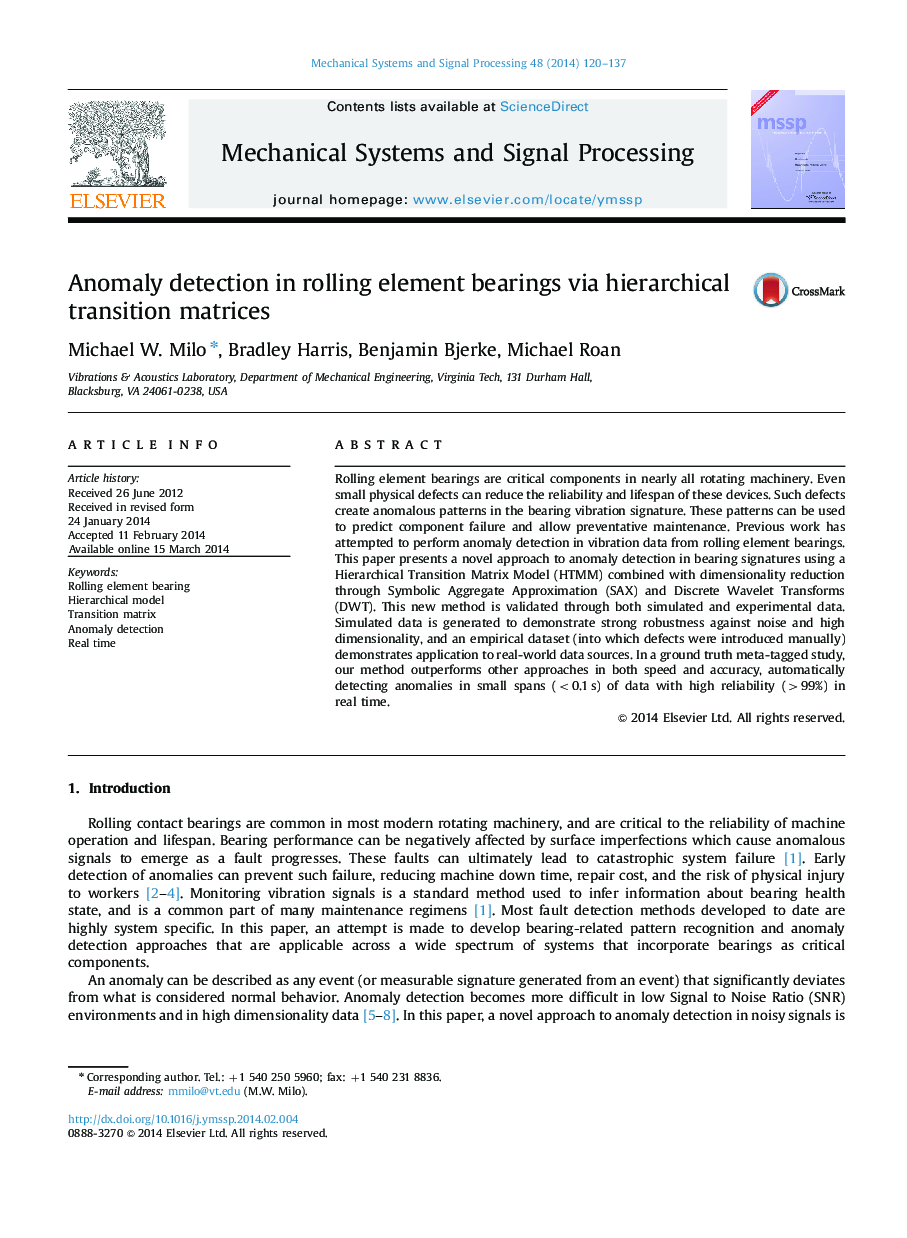| Article ID | Journal | Published Year | Pages | File Type |
|---|---|---|---|---|
| 560314 | Mechanical Systems and Signal Processing | 2014 | 18 Pages |
•We approach bearing signature anomaly detection using hierarchical transition matrices.•Experimental rolling element bearing data are analyzed for anomalies.•Our novel approach is compared to other methods in a ground-truth study.•Various data types, anomaly lengths, and timescale resolutions are incorporated.•We report highly accurate and rapid anomaly detection in real-time.
Rolling element bearings are critical components in nearly all rotating machinery. Even small physical defects can reduce the reliability and lifespan of these devices. Such defects create anomalous patterns in the bearing vibration signature. These patterns can be used to predict component failure and allow preventative maintenance. Previous work has attempted to perform anomaly detection in vibration data from rolling element bearings. This paper presents a novel approach to anomaly detection in bearing signatures using a Hierarchical Transition Matrix Model (HTMM) combined with dimensionality reduction through Symbolic Aggregate Approximation (SAX) and Discrete Wavelet Transforms (DWT). This new method is validated through both simulated and experimental data. Simulated data is generated to demonstrate strong robustness against noise and high dimensionality, and an empirical dataset (into which defects were introduced manually) demonstrates application to real-world data sources. In a ground truth meta-tagged study, our method outperforms other approaches in both speed and accuracy, automatically detecting anomalies in small spans (<0.1 s) of data with high reliability (>99%) in real time.
